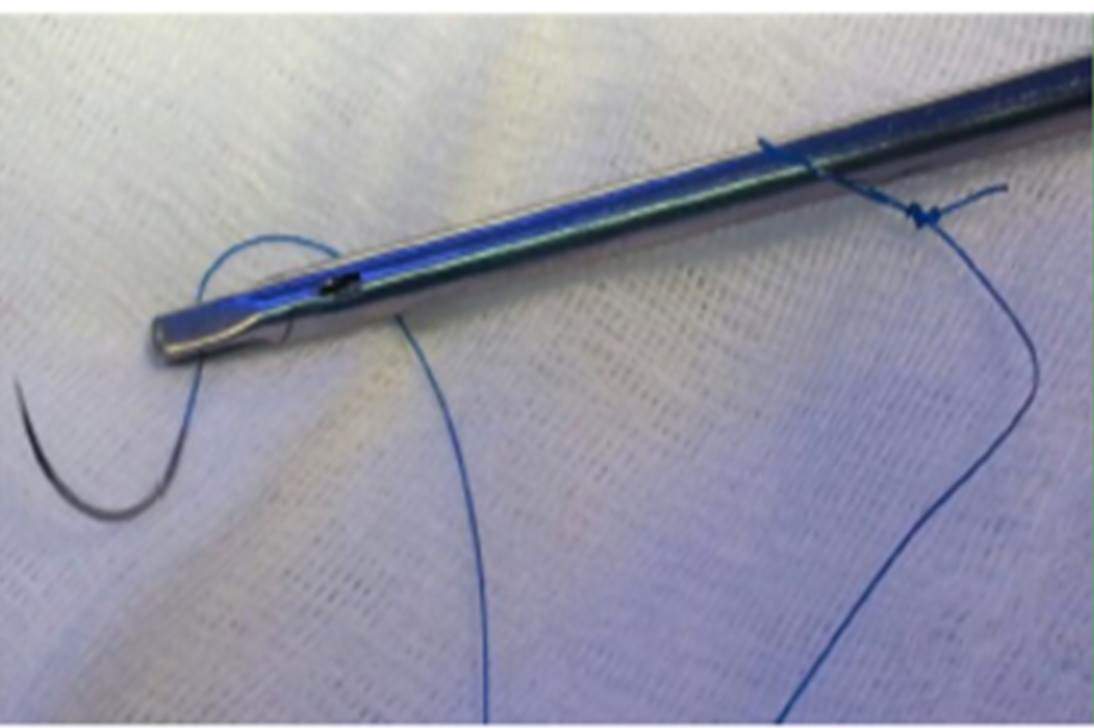The reinforcement of the suture line of staples can be made with different materials. In our institution, we have a vast experience of patients operated with duodenal crossover (CD) and laparoscopic vertical gastrectomy (LVG). We use a 12 mm intragastric probe as a guide and we vascularize all the major curvature passing 1.5 cm distal pylorus.
We initiate pylorus gastrectomy with sequential staplers up to the esophago-gastric junction. We routinely try to prevent hemorrhages and leaks in the staple line with a reinforcement suture that includes the epiplon, the posterior gastric wall and then the anterior one along the entire length of the gastric staple line. The objective of using the already divided epiplon together with the suture line is to avoid rotation of the gastric tube.
Knotting in this upper part of the gastric tube is not an especially easy task for the morbid obese. The instrument nurse (Figure 1 and Figure 2) creates a sliding knot at the end of the 3/0 polypropylene suture, with a double extracorporeal loop to avoid the need for an intra-corporeal knot.
The surgeon clamps and holds the thread very close to the needle with his left hand and introduces it into the abdomen by means of a trocar of 10 (Figure 3). Once in the abdomen, with the needle holder of the right hand, he holds the needle in the center and begins the suture of both gastric walls. Simply pull the thread to complete the first knot. The procedure is quick and easy, without having to knot in the abdomen.
This first suture of the staple line is continued until the middle of the line and ends with the application of the Aberdeen knot, also self-sliding, by passing the needle holder around the tension suture twice.
The second part of the suture line is similar, and begins in the middle of the staple line, until ending in pylorus. The purpose of using this sliding self-locking knot at the beginning of the suture line is to avoid intra-corporeal knotting. Aberdeen knotting at the end of both sutures is also very simple and has the same sliding effect.
Discussion
To date, there are no data available in the literature that strongly demonstrate differences in terms of leakage rates between reinforcing materials in the GVL 1-5. But with this technique we have not had a single leak in the last 478 suture lines. And we have continued to routinely use the self-blocking knot to initiate all the sutures of the laparoscopic digestive and is topped with the Aberdeen knot. Daes 5 is the first to describe this knotting in 2013 and we add 6,7 the plastia of the epiplon to the rest of the line of staples to avoid torsion of the gastric tube. Other authors have continued to use it 8,9.
See video https://youtu.be/mh5gDPF5zhg











 texto em
texto em 





